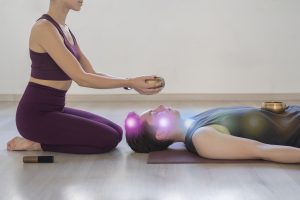The post If Not Now, When? appeared first on Michigan Associates of Acupuncture and Integrative Medicine.
]]>
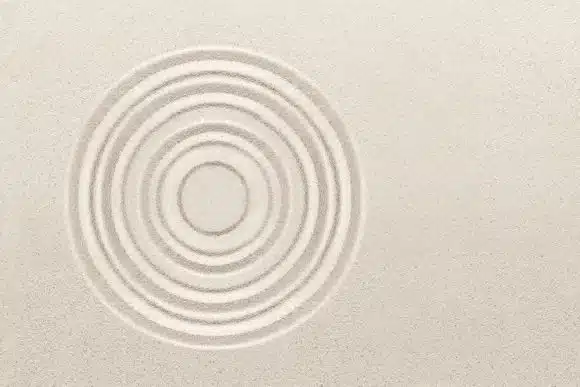
The past few weeks have been a time of self-reflection. Within a short span of time, I learned of an acquaintance who passed unexpectedly and attended the funeral of the father of a good friend. I also met with several returning patients who were diagnosed with a chronic, preventable health issue.
With 25 years of experience as an acupuncturist, I’ve had the privilege of meeting a diverse array of patients. Some of them proactively take charge of their health, reaching out for support when faced with challenges, whether it’s a lingering cold, digestive troubles, or persistent pain. These patients often experience remarkable results, as acupuncture becomes a vital partner in their healing journey.
Yet, I also encounter individuals who seek our help as a “last resort”—a sentiment many readily share. They may have neglected their well-being, become consumed by their busy lives, or postponed seeking assistance until it felt” too late.” Treating these patients can be more complex; their progress often takes longer, and their desired outcomes may seem elusive.
Trust me, we pour our hearts into helping every patient who walks through our door. Still, it can be disheartening to witness someone so far along their path of illness that acupuncture cannot produce the transformative changes it might have if they had sought help sooner.
We are a society that yearns for swift change but often take slow, hesitant steps toward it. We are filled with impatience while simultaneously craving the time to heal. We place high expectations on the medical system, yet we frequently neglect to nurture our own body, mind, and spirit in ways that would allow us to truly flourish.
I ask you: If not now, when? Now is the time to prioritize your health and well-being. Let’s take this step together. When you have a moment, write down your short- and long-term health goals. Be completely honest with yourself. Next to each goal, note what you are doing to work toward achieving it. Are you on the right track, or are you procrastinating? Set target dates for yourself to move toward achieving optimal health. Remember, healing is never a straight line, and there’s no better time than now to start on your journey.
The post If Not Now, When? appeared first on Michigan Associates of Acupuncture and Integrative Medicine.
]]>The post Acupuncture can Help with Digestion Problems appeared first on Michigan Associates of Acupuncture and Integrative Medicine.
]]>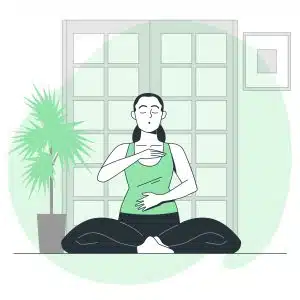
We often have patients come into clinic with multiple concerns. Digestion issues are frequently part of a complex of symptoms. Many erroneously think acupuncture is only used for pain. Chinese medicine however, is a full body medicine and can help improve digestion by gently supporting the body to heal itself through several mechanisms.
- Regulation of Qi and Blood Flow: According to traditional Chinese medicine (TCM), digestion issues can result from imbalances in “Qi” (vital energy) and blood flow. Acupuncture aims to restore balance by stimulating specific points on the body, which can enhance the flow of Qi and blood to the digestive organs.
- Modulation of the Nervous System: Modern research suggests that acupuncture may affect the autonomic nervous system, which controls involuntary bodily functions including digestion. By modulating the nervous system, acupuncture can potentially improve gut motility and reduce symptoms like bloating, constipation, or diarrhea.
- Reduction of Inflammation: Some studies indicate that acupuncture might help reduce inflammation in the gut. This could be beneficial for conditions like inflammatory bowel disease (IBD) or gastritis, where inflammation plays a key role in symptoms.
- Stress Reduction: Stress can significantly impact digestion. Acupuncture may help alleviate stress and anxiety, which in turn can positively influence digestive health. By promoting relaxation and reducing stress, acupuncture can indirectly improve digestive function.
- Enhancement of Digestive Function: Acupuncture might help stimulate digestive enzymes and improve overall digestive function. It is thought to enhance the digestive process by supporting the stomach and intestines in processing food more effectively.
- Pain Relief: For conditions associated with abdominal pain, such as irritable bowel syndrome (IBS), acupuncture may provide relief by targeting pain pathways and reducing discomfort.
While many people report positive outcomes from acupuncture, its effectiveness can vary. It’s important to be used in conjunction with diet and lifestyle changes for a more comprehensive approach to digestive health.
The post Acupuncture can Help with Digestion Problems appeared first on Michigan Associates of Acupuncture and Integrative Medicine.
]]>The post Increasing the Healing Process: What to Do When Your Doctor Says, “Just Wait” appeared first on Michigan Associates of Acupuncture and Integrative Medicine.
]]>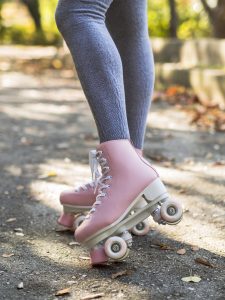
The next day, still in shock and running on little sleep, I went to see my doctor. While my low back was sore, I didn’t think it was anything serious. However, I could barely bend my elbows, and my wrists were tender, though I retained some range of motion. It was clear that my elbows had taken the brunt of the fall.
Diagnosis: Broken Elbows, No Surgery
The X-rays confirmed my suspicion—broken elbows. Luckily, they weren’t as severe as fractures in my wrists or shoulders, which would have required surgery or casting. My doctor reassured me that elbows heal through movement and that no immobilization was necessary. Instead, he told me, “Just wait for your body to heal.”
But passively waiting didn’t sit well with me. As an alternative medicine practitioner, I knew there were ways I could actively support my healing process. I decided to take a proactive approach, combining both traditional and alternative therapies to speed up my recovery.
Healing Through a Holistic Approach
Mental Healing: Rest Is Essential
Healing starts from the inside out. The body doesn’t heal when we’re stressed or rushing through life—it heals when we rest. While sleep is vital, I realized that simply going back to my usual routine too quickly would hinder my progress. My body was physically repairing broken bone, and I needed to honor that by prioritizing rest.
I made sure to support my body during the initial days of healing by incorporating a variety of therapies:
- Acupuncture
- Sound Bowl Healing
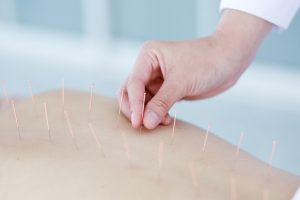
Additionally, I listened to binaural beats while lying in front of the fireplace for at least 30 minutes, three times a day. This helped me enter a deep state of relaxation and promote healing. By giving myself this level of care early in the recovery process, I knew I was setting the stage for long-term success and minimizing the risk of future complications.
Internal Healing: Supplementation & Remedies
In addition to mental and emotional rest, I focused on internal healing with the following:
- T-Relief: I took one tablet up to five times daily, under the tongue, away from meals and mint. This homeopathic remedy is designed to reduce pain and inflammation, particularly after acute injuries.
- Vitamin D: I supplemented with 5000 IU daily during the first month of recovery, as vitamin D plays a crucial role in bone health and immune function. D3 with Vitamin K is the best form.
- Bone Builder Forte by Metagenics: MCHC is a highly absorbable crystalline compound that provides everything found in healthy bones.
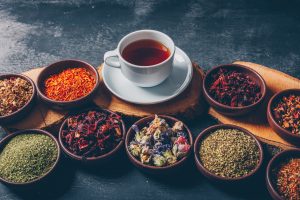
Physical Healing: Active Recovery
Even though I had to scale back my usual activities, I knew it was important to keep my body moving in a way that supported my healing. Here’s what I did:
- Movement: I reduced the intensity of my swimming routine but didn’t stop altogether. Gentle movement, even at a slower pace, helped keep blood flowing to the injured areas.
- Hot Tub Therapy: I spent time in the hot tub with my elbows near the jets, using the warm water to promote circulation and reduce stiffness.
- Acupuncture: For injury recovery, acupuncture was essential in getting my body out of “fight or flight” mode and into healing mode. The tiny needles stimulate microcirculation, which accelerates the recovery process.
- Light Therapy (Celluma Laser): I also incorporated Low-Level Light Therapy (LLLT), which uses specific wavelengths of light to improve cellular performance. Light therapy has been shown to:
- Increase blood flow
- Reduce inflammation
- Stimulate collagen production
- Accelerate tissue repair
The Celluma Laser, an FDA-cleared device based on NASA research, delivers blue, red, and near-infrared light energy to promote healing by stimulating cellular activity and supporting the body’s natural repair processes.
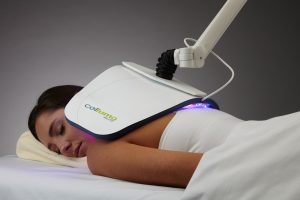
Two Weeks Later: Results Beyond Expectations
When I returned to my doctor for a follow-up two weeks later, he was impressed with my progress. He said, “You’re healing faster than most of my patients! You’ve regained more range of motion in two weeks than some people do in a month. What did you do?!”
It was a reassuring moment, confirming that my holistic approach was working. But I didn’t stop there. I asked my doctor how long the bones would take to fully heal and put that information on my calendar for the next 12 weeks. This served as a constant reminder to prioritize recovery and avoid rushing back into a hectic lifestyle.
The Importance of Patience and Proactive Healing
In the end, the journey wasn’t just about “waiting” for my body to heal. It was about being an active participant in my recovery, using a combination of traditional and alternative therapies to support my body at every stage.
While it’s tempting to push through pain or return to our normal routines too quickly, I learned that recovery requires patience, rest, and intentional care. By honoring the healing process early on, I set myself up for a stronger and more complete recovery.
Taking Control of Your Healing Journey
No matter the injury, you can take control of your healing process. Whether you’re dealing with a broken bone, muscle strain, or another injury, consider incorporating a holistic approach that includes both medical care and self-care practices. Rest, movement, and the right supplements and therapies can all play a crucial role in your recovery.
By committing to this process, you’re not just waiting for time to heal you—you’re actively supporting your body’s natural ability to heal itself.
The post Increasing the Healing Process: What to Do When Your Doctor Says, “Just Wait” appeared first on Michigan Associates of Acupuncture and Integrative Medicine.
]]>The post What do I do next? How to make informed choices in healthcare appeared first on Michigan Associates of Acupuncture and Integrative Medicine.
]]>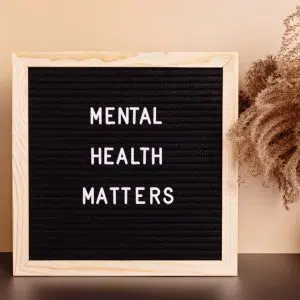
In 18 years of practice, I’ve had my fair share of conversations supporting a patient in figuring out what to do next. When it comes to health, the journey forward is not black and white. There are many things to consider when you’re thinking about possible treatments whether they be medication, surgery, or alternative routes. What I’ve found over the years is that folks aren’t always thinking as clearly as they may like to in these situations.
Oftenttimes, beneath the surface of rational thought lies a complex web of cognitive processes that can subtly influence our choices. These processes, often referred to as cognitive distortions, can significantly impact the quality and effectiveness of medical decisions.
What are Cognitive Distortions?
Cognitive distortions are patterns of thinking that are irrational, biased, or inaccurate. They can shape how we perceive information, interpret situations, and make judgments. These distortions are not deliberate; rather, they are automatic and often rooted in deep-seated beliefs or past experiences.
Examples of Cognitive Distortions in Medical Contexts
- Catastrophizing: This involves magnifying the importance or implications of a health issue or medical procedure. For instance, someone might overly focus on the potential risks of a treatment without adequately considering its benefits. This is very common as no one wants to be in these positions in the first place. We have a lot of fear and resistance that comes up with health challenges.
- Overgeneralization: Drawing broad conclusions based on limited evidence. For instance, assuming that because one treatment did not work well for a friend, it will also fail for oneself. I often hear this when people do an excessive amount of internet polling. Of course it’s good to do research but you can’t take other people’s journeys on as your own.
- Confirmation Bias: Seeking out information that confirms preexisting beliefs while ignoring contradictory evidence. This can lead individuals to favor sources that support their views rather than considering a balanced perspective. This is very important in the day and age we are in where often times our medical information comes from patients rather than experts.
- Emotional Reasoning: Making decisions based on emotions rather than objective facts. For example, someone might refuse a necessary surgery out of fear, despite medical evidence indicating its benefits & safety. I see this in practice mostly when people want to leave surgery as a “last result” when there are some occasions where the surgery is the only true way to fix the situation and waiting longer will only make the surgery more difficult to perform and recover from.
- Labeling: Applying overly simplistic labels to oneself or others based on health conditions. This can lead to stigma or self-fulfilling prophecies regarding health outcomes. This is a quite common reaction to going on medication. I’ve seen “health influencers” making statements such as “all medication is poison” while this is simply not true. There are plenty of folks taking medication for whom it is wholly life affirming – meaning they are able to be the best versions of who they are – and have little to no negative side effects. It is just a very nuanced conversation and to say all medication is poison is a part of why people feel the stigma and don’t take medications that they very may well need.
Impact on Medical Decision-Making
- Treatment Compliance: Patients may fail to adhere to prescribed treatments or therapies due to exaggerated fears or misconceptions.
- Decision Paralysis: Overwhelmed by negative thinking or catastrophic predictions, individuals may struggle to make decisions, delaying necessary medical interventions. Having a helpful medical team is the best way to navigate this situation. Friends and family are generally not educated enough on these topics to be weighing in.
- Misinterpretation of Information: Patients may misunderstand medical information or selectively focus on details that confirm their biases, leading to misguided choices.
- Stress and Anxiety: Persistent cognitive distortions can exacerbate stress and anxiety related to health conditions, further impairing judgment and quality of life. This is quite common for people who experience looping thoughts. They often are so anxious that they can’t get the proper treatment that they need, which keeps them stuck in their health challenges rather than moving through them.
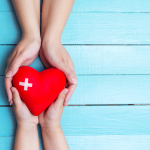
Addressing Cognitive Distortions
Recognizing and addressing cognitive distortions is crucial for improving medical decision-making:
- Education and Awareness: The first step begins with having the capacity to realize your anxiety, biases, and lack of education could be playing a role. When we’re the patient, it’s impossible to be objective. This will help you to see where you’re making choices from.
- Cognitive Behavioral Therapy (CBT): CBT techniques can help individuals identify and challenge cognitive distortions, promoting more balanced and rational thinking.
- Shared Decision-Making: Collaborative approaches between patients and healthcare providers can help ensure that decisions are based on comprehensive information and aligned with the patient’s values and preferences.
- Support Networks: Engaging with support groups or counseling services can provide emotional support and alternative perspectives, reducing the impact of cognitive distortions.
I’m grateful to be a part of the process of fostering awareness and reducing biases. It’s hard to be in the patient seat which is why it takes a village of practicioners to support us when we’re going through something.
By fostering awareness, promoting education, and integrating supportive interventions, we can empower individuals to make more informed, rational, and ultimately beneficial medical decisions. Addressing cognitive distortions is not merely about correcting faulty thinking patterns but about enhancing the overall quality of care and outcomes for patients.

The post What do I do next? How to make informed choices in healthcare appeared first on Michigan Associates of Acupuncture and Integrative Medicine.
]]>The post Thanksgiving In April appeared first on Michigan Associates of Acupuncture and Integrative Medicine.
]]>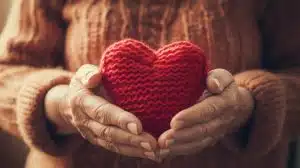
The practice of gratitude is important for everyone but especially for those of us going through a struggle—from infertility, to chronic pain to relationship difficulties—gratitude is the one thing we can control. So many of us have a hard time dealing with the lack of control in life and truth be told, there are so few things that anyone can truly control. But to be grateful helps the mind shift from negative to neutral; from overwhelm to presence. To be grateful is not to minimize the experience or to turn “bad” things into “good”. (Gratitude is NOT blind positivity) Rather, gratitude is an acknowledgment of things that we often take for granted—eyes that allow us to see, legs that allow us to run, fresh air in our lungs, music we love, people we love, the gift of waking up in the morning and so on. To be grateful for such things despite our struggle transforms our perspective into a more tenable reality. Gratitude is the “yin” to hardship’s “yang” and as Taoist theory has explained for thousands of years, life is balance!
The post Thanksgiving In April appeared first on Michigan Associates of Acupuncture and Integrative Medicine.
]]>The post Chinese Medicine and Infectious Disease appeared first on Michigan Associates of Acupuncture and Integrative Medicine.
]]>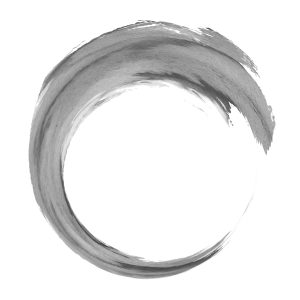
Believe it or not, Chinese medical theory has explored infectious disease for thousands of years. In fact, one of its classical texts, The Shang Han Lun, describes the foundational principals of how the body acquires various infections, or “wind invasions” as they are known in the literature. The principals and theories described are still used effectively in clinical practice today!
In Chinese medical theory, flus and viruses are invasions by external pathogens. These pathogens are described in terms of environment; instead of getting a step infections, it can be an invasion of heat, cold, wind or dampness. Once these invasions enter the body, it goes into the following “levels”:
- Tai Yang: This is the most superficial layer. This is the early stages of illness and are the easiest to treat. Symptoms include sneezing, runny nose and sore throat.
- Yang Ming: The “middle” layer. This is when a pathogen triggers a strong immune response and can cause “heat” symptoms such as fever and fatigue. The body’s natural immunity is more activated here than in the Tai Yang.
- Shao Yang: This is known as “half in, half out”. This happens once a virus has been lingering for a while. Symptoms tend to come and go sporadically. The idea is that the invasion was never fully expelled and now is lodged between the superficial and deeper (organ) layers.
This concept provides various treatment strategies for each level. The moral of the story is to come seek treatment AS SOON as the first stages of illness begin. Being mindful of your body is important to identify when things start to become out of balance and to address it immediately!
The post Chinese Medicine and Infectious Disease appeared first on Michigan Associates of Acupuncture and Integrative Medicine.
]]>The post Using Chinese Herbs during Cold and Flu Season appeared first on Michigan Associates of Acupuncture and Integrative Medicine.
]]>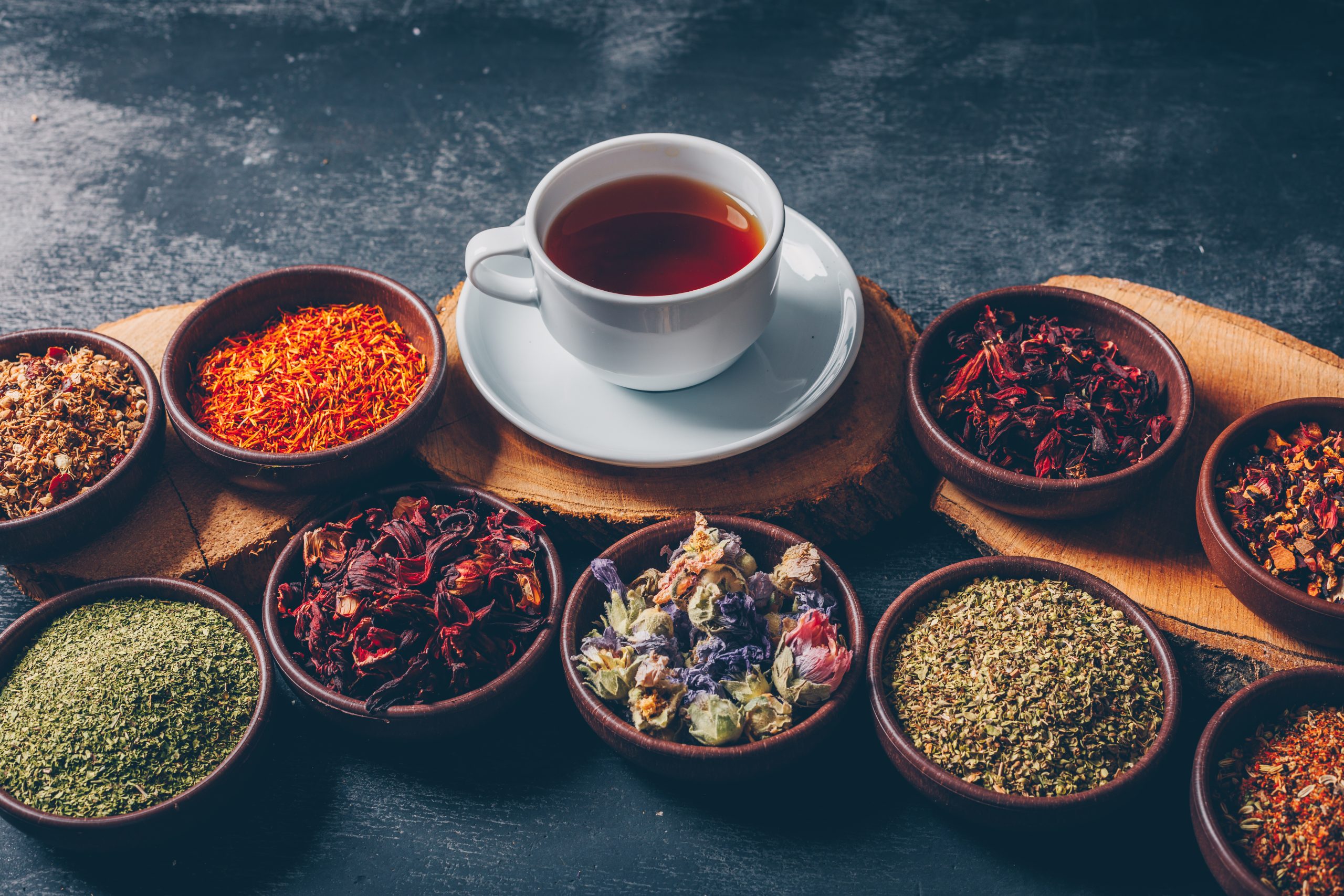
As the days are shorter and fall is winding down, most Michiganders are physically and emotionally preparing for winter. Boosting the immune system is important during this time of the year, especially in the wake of Covid, flu and RSV. While diet, exercise and good rest is always an important piece of this puzzle, Chinese Herbal Medicine can also be used to help support immunity. There are several well known Chinese herbs that are used in cooking and can be found at the local grocery store. These include garlic, ginger, cinnamon, scallion, cardamon and miso. Cooking with these herbs on a regular basis can help boost immunity and even treat the early stages of colds and viruses.
Miso soup is a version of a common Chinese herbal formula (Cong Chi Tang) that can be used in early stages of a cold. (when just starting to feel a little more tired, a little more congested and a tickle in the throat.) The classic formula is made up of just 2 herbs—fermented soybean and scallion. These two herbs are used to expel the pathogen from the body and support the body’s defense (immune) qi. In practical use, make sure to add a plentiful amount of fresh scallions! The spicy flavor helps to “expel wind pathogens” (which translates to the virus, in Chinese medical terms). See below for a classic Miso Soup recipe.
Cinnamon twigs are also an important Chinese herb to use during cold and flu season. Use it daily in your coffee or tea and increase the dose once any mild cold symptoms begin. Enjoy!
If you are looking for a medicinal formula, Chinese herbs are most commonly prescribed by an acupuncturist in the form of tinctures, tea pills, capsules or granules. These formulas are made up of a combination of herbs and are the most effective means of strengthening immunity to lessen the severity and duration of any infection. These herbs are dispensed at our clinic and are often utilized during the fall and winter seasons for prevention and reduction.
BASIC MISO SOUP
1/2 cup wakame or kombu, cooked and cut into small pieces.
2-3 tablespoons miso
1 1/2 cups chopped vegetables (see options below)
4 cups water (soup stock or seaweed/soak in water)
1 teaspoon of sesame oil
Sauté vegetables along with seaweed. Add water and bring to a scald. Reduce heat to low and simmer covered 15 minutes. Cream miso in a little broth, return to soup. Bring soup back to scald and remove from heat. Garnish. Serves 4-6.
Vegetables: Daikon, leek, onion, burdock root, eggplant, mushrooms, turnips, carrot, cabbage, potatoes, spinach, lotus root, sweet potatoes, bean sprouts, wild vegetables, chrysanthemum, tofu, wheat gluten, and seaweeds.
Basic Miso Soup recipe courtesy of Healing with Whole Foods by Paul Pitchford
The post Using Chinese Herbs during Cold and Flu Season appeared first on Michigan Associates of Acupuncture and Integrative Medicine.
]]>The post When the healer needs to health thyself! appeared first on Michigan Associates of Acupuncture and Integrative Medicine.
]]>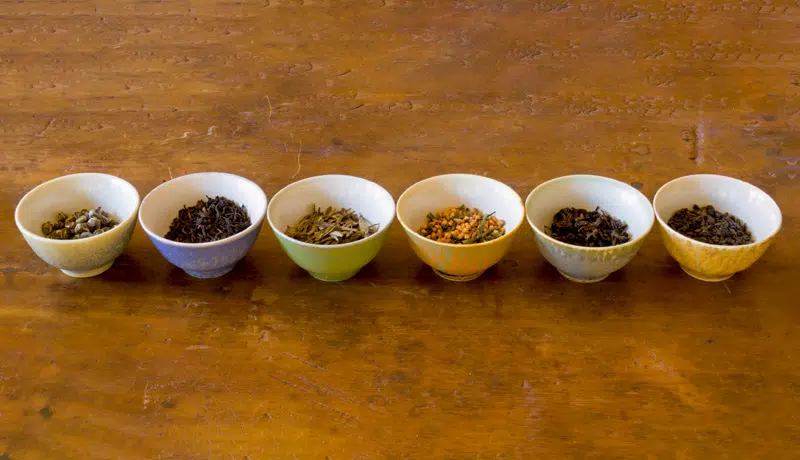
I want to preface this blog post with a disclaimer: I believe that Western medicine is the best in the world for diagnostics and emergency medical treatment. As a practitioner of Chinese medicine, we have our own diagnostic tools, but we don’t take x-rays, blood work, CT scans, and other measures that could prove life-saving. I often tell my patients that the best healthcare is a combination of Eastern and Western medicine. Western medicine usually works faster than herbal medicine, but can come with side effects. In emergency medicine, faster is going to be better. Chronic conditions and non-emergency acute health issues can be treated with TCM without the side effects of Western medications. There are always trade-offs in life!
With that said, I wanted to share a recent self-healing process. An unusual circumstance occurred for me this past month. I developed a tickle in my throat, which by itself is not that unusual. I’ve had to clear my throat of phlegm, mainly in the morning, most of my life. But this need to clear my throat was going on for three days.
The frequent throat clearing moved to a light cough, like my bronchioles were being tickled. I wasn’t sure what to make of it because I had no other symptoms. I tested negative for Covid three days in a row and I had no runny nose or congestion. I felt fine other than a light, dry cough.
A few days later, the cough became productive and I could see the color of phlegm getting darker. I thought to myself, “Well, this looks like it’s turning into an infection.” I decided to start on some strong antibiotic Chinese herbs to clear up what in TCM is considered heat in the lungs (or infection). I took those herbs for about four days and the color lightened until it became clear.
But the cough persisted with light-colored mucus. I then changed formulas to dry the damp in the lungs and promote the movement of Lung Qi downward (instead of upward which causes coughing). I took those herbs for about 5-6 days and the phlegm cleared up significantly. That left me with an occasional alternating dry and slightly wet cough that was more reactive to laughing or talking too much. At that point, I needed to change the formula to strengthen my lungs, direct Qi downward, and continue to dislodge and dry the residual phlegm.
The last symptom after everything else cleared up was losing my voice for a few days. Again, I took some herbs and rested my voice. I am now symptom-free two weeks after the initial onset of symptoms. The beauty of herbal treatment is its specificity – I was able to treat each specific symptom as it presented and update my herbal regimen as my symptoms changed, keeping me in tune with my body and leaving me free of side effects like drowsiness that sometimes come with more cure-all cold medicines.
The take-home message is that Chinese medicine can directly treat symptoms that, over time, can resolve internal medicine issues. But there are of course situations that would be best handled by seeing your primary care doctor. I was completely ready to see my primary care doctor if there was no improvement in color and amount of phlegm, or intensity and frequency of cough. I was seeing improvement in each of those issues, but acknowledge it likely took longer to resolve than it might have with antibiotics, an inhaler, or possibly steroids and an x-ray. For me personally, I prefer to use those measures in more severe circumstances.
We have wonderful formulas at our disposal to treat viruses and seasonal allergies. Acupuncture in combination with herbs can be even more effective. It’s always good to know you have options in life! Chinese medicine is not only effective for pain, but wonderful for non-emergency acute and/or chronic health issues as well.
The post When the healer needs to health thyself! appeared first on Michigan Associates of Acupuncture and Integrative Medicine.
]]>The post Using Traditional Chinese Medicine in 2022 appeared first on Michigan Associates of Acupuncture and Integrative Medicine.
]]>
As an acupuncturist, our knee-jerk response is “everything!” Of course, we are not so naïve to believe that acupuncture is a cure-all. However, Chinese medicine began as a preventative medicine and is ideally used as such. Therefore, acupuncture really IS for everyone! The premise is when the balance of energy is maintained, disease cannot arise.
For those struggling with the concept of energy, a better example would be to identify “symptoms”. Such symptoms are not necessarily pathological from a Western medical perspective like mild constipation, difficulty sleeping or low energy. However, these are small clues to where the energies are in or out of alignment. Acupuncture and TCM are more commonly used today for support.
Acupuncture effectively moderates the side effects of medications, potentiates the effects of a medication, alleviates pain when combined with other modalities, and calms anxieties with the use of therapy and medication.
It truly takes a village to be well, and acupuncture is one of the oldest, most tested members of this village!
The post Using Traditional Chinese Medicine in 2022 appeared first on Michigan Associates of Acupuncture and Integrative Medicine.
]]>The post What Does Your Heart Desire? TCM and the Heart Organ System appeared first on Michigan Associates of Acupuncture and Integrative Medicine.
]]>The heart as emperor lives well protected at the center of the nation. No injury must come to the heart and as long as the heart’s function is intact, there is always hope of healing. Nei Jing Su Wen
In Traditional Chinese medicine, the Heart organ system is likened to a benevolent, enlightened monarch of a kingdom and is responsible for the circulation of qi among the 12 meridians, as well as all spiritual and mental activities. Although there are similarities with the Heart organ functions, there are clear differences between how Western and Eastern medicine view them.
The physiological functions according to TCM include controlling blood vessels, circulation, sweating and mental activities. Functions according to Western medicine include removing metabolic waste, pumping blood through the body and facilitating the movement of oxygen, nutrients and hormones.
“The heart rules the blood and the constancy of its beat reflects its commitment to fulfilling its role as sovereign ruler.” Lonny Jarrett

The Heart is in charge of continuously pumping blood throughout the body as well as regulating blood flow. The strength of one’s Heart qi determines if its’ beating is strong and healthy, which is reflected in the rhythm and rate of the pulse. The constant cycle of blood circulation provides nutrition for the body, including our organs and limbs, ensuring normal functioning of the various structures and organs. A healthy individual will appear as energetic, having a rosy complexion and a rhythmic, forceful pulse. If there are any imbalances in the Heart qi, yin, yang or blood an individual can manifest symptoms such as a pale complexion, thin and weak pulse, darkened, purplish complexion and a choppy pulse.

Heart Shen
In TCM, the heart is the location where the “spirit” (shen) resides. In general, Heart shen is equal to the overall vitality of an individual, which is often observed through the complexion, eyes and responses. This indicates the quality of a healthy Heart spirit. The presence or absence of “shen” is important in the prognosis of physical and emotional conditions. All of the five organs in Chinese medicine contain qi, yin, yang and blood. For the heart, the heart blood and yin have roles when it comes to nourishing the “shen”. If there is adequate presence of heart blood and yin, an individual will display clarity and sound mind and if there is a deficiency in either blood or yin, individuals will show signs such as heart palpitations, insomnia and psychological disorders.
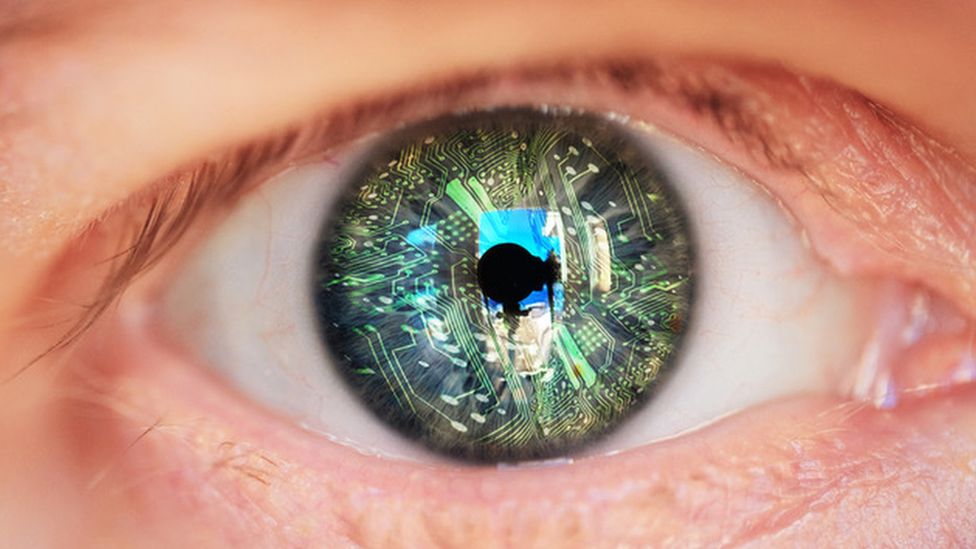
Did you know your tongue reflects your Heart?
According to TCM theory, it is believed that the essence of the Heart organ system is accessible through the tongue. By observing changes in the tongue, we are able to understand the health status of the heart.

Language, communication, expression and taste are dependent on the normal functioning of the heart. Imbalances in the Heart can reflect on the appearance of our tongue. Unlike blood pressure and heart rate which can fluctuate, changes to the color and texture of the tongue are indicative of health issues occurring within the body. If the Heart qi, blood, yin and yang levels are all balanced, the tongue appears to be a healthy, pinkish-red color with a soft, flexible body. Insufficient Heart blood will reflect as a pale, white tongue. Blood stagnation manifests as a dusky red/purple with distended sublingual veins. Cracks or lines down the center of the tongue also indicate a potential Heart function issue.
Fluid of the Heart:
Perspiration comes from body fluid, and the Heart controls bodily fluids. If you find you are perspiring excessively, it can signal a Qi or energy deficiency of the Heart. On the other hand, if you engage in activities that make you sweat too much, this can cause a Qi deficiency of the Heart.
Tissue of the Heart:
Because the face has many blood vessels, our complexion reveals the state of the Heart. Like the tongue, a pale complexion can indicate insufficient blood, and an overly red face can signal excessive heat. Radiance and vitality which are reflected on the face can be used to determine the health status of the Heart qi, blood, yin and yang levels. If there is adequate Heart blood circulating, the face appears radiant and rosy.
Digestion and Heart Health:
As mentioned above, the Heart is the monarch of the kingdom of all organs. All the other organs will sacrifice for the Heart by giving their energy to help the Heart maintain balance.
According to Five Element theory, The Stomach organ system is the “child” of the Heart. If the Stomach is functioning well then the mother is content. In this simple analogy we understand that Stomach energy must be in balance for Heart energy to be balanced.
In addition, the Liver is the “mother” of the Heart. When an individual is under continual stress, Liver energy becomes compromised because one of its energetic functions is to smooth and regulate emotions. When chronic stress or excessive emotion is experienced, the Liver cannot offer proper support to the Heart.In order to take care of our cardiovascular health, it’s imperative to take care of our digestive organs, the Liver and the Stomach!
Physical and Emotional Symptoms related to the Heart:
Angina, atherosclerosis, heart attacks
High/low blood pressure
Poor circulation
Varicose veins
Frozen shoulder
Hot, painful joints
Stiff neck/shoulders
Hot flashes
Insomnia
Digestive issues
Palpitations
Anxiety
Cynicism
Lack of joy or humor
Mania
Confusion
Restlessness
Tips for a healthy Heart
Mindset Matters: Because the mind is linked directly to the Heart, what goes on in your mind can play a part in the health of your Heart. Maintaining a positive mindset can greatly impact the health of the heart system. Common suggestions for mental wellness to ease the pressure on the Heart include regular meditation, repeating positive affirmations, and taking a step away to reset during stressful situations. It’s also important to hold yourself with compassion and gratitude, actively seeking to fill your life with positive influences.
Certain foods have very specific effects in the body and an affinity for the Heart! Dark, leafy greens, asparagus, broccoli rabe, black beans, brussel sprouts, celery, cinnamon and cucumbers all support heart health. The color red correlates to the Heart organ system. Foods that are red or dark in color are beneficial as well. Think persimmons, pomegranates, berries, tomatoes, red beets, red/leafy greens, salmon, red lentils and lean red meat are known to protect cell membranes, maintain vessel elasticity, healthy blood flow and are chock-full of antioxidants.
Herbal supplements that support Heart health include San Qi known as Panax Notoginseng that improves circulation and regenerates red blood cells. Red Sage, also called Dan Shen is also an effective herb for cardiovascular health. It is beneficial for myocardial ischemia as it can widen coronary arteries to increase coronary blood flow. It’s also known to improve the body’s micro-circulation and reduce viscosity of blood to strengthen the body’s overall blood circulation.CoQ10 is a powerful antioxidant that helps reduce the risk of heart attack, stroke, cardiovascular disease and can manage blood pressure.
Last but certainly not least, if you have experienced any of the aforementioned physical or emotional symptoms related to the Heart organ system, give us a call to schedule an assessment, treatment plan/protocol and Acupuncture session. Treatments help decrease stress, systemic inflammation, improve circulation throughout the body, stimulate oxygen and lymph flow, calm the nervous system and balance digestion, sleep, hormones and cortisol levels….everything your Heart desires!
The post What Does Your Heart Desire? TCM and the Heart Organ System appeared first on Michigan Associates of Acupuncture and Integrative Medicine.
]]>